Readers of this column will be relieved to learn that I’ve snapped out of my morose, self-indulgent “I’ve got no projects queued up on the three cars in the garage and the driveway is blocked with snow, so I can’t swap the cars out for other cars, so I’ve got nothing to do this week but complain about how awful Facebook Marketplace is” mood. With three cars in the garage—the ’74 Lotus Europa Twin Cam Special, the recently curb-struck Z3, and the ’73 2002—there are always things to do.
So I sucked it up and did some of them.
I concentrated on Hampton, the 48,000-mile ’73 2002 that I hope to sell on Bring a Trailer at some point in the spring. The car is very original, but the factory two-barrel Solex and its big circular air-cleaner assembly having been replaced with a Weber 32/36 and its little attendant rectangular chrome K&N filter and housing. Last year I bought an original air-filter assembly, along with the housing-to-Weber adapter and the little fresh-air-flow selector box that attaches to the “snorkel” on the car’s nose, but found that the housing hit the underside of the hood.
This is a common problem, and there’s a long post here on bmw2002faq about how to deal with it (basically, you get rid of the adapter and instead cut the bottom of the housing to allow it to sit directly on the Weber). However, I found that by judiciously shaving down the top of the adapter and trimming the sheet metal on the underside of the housing so it sits as flat on the top of the adapter as possible, I was able to get enough clearance.
I’m a practical guy and like the way that the smaller K&N filter allows access to the body of the Weber—as well as other things near it like the fuel pump—but on a car like this, where the goal is to portray it as well as possible as the unrestored survivor that it is, the stock setup is appropriate. Plus the brackets for the original air cleaner housing were still in place, and they looked kind of silly reaching skyward but holding up nothing.
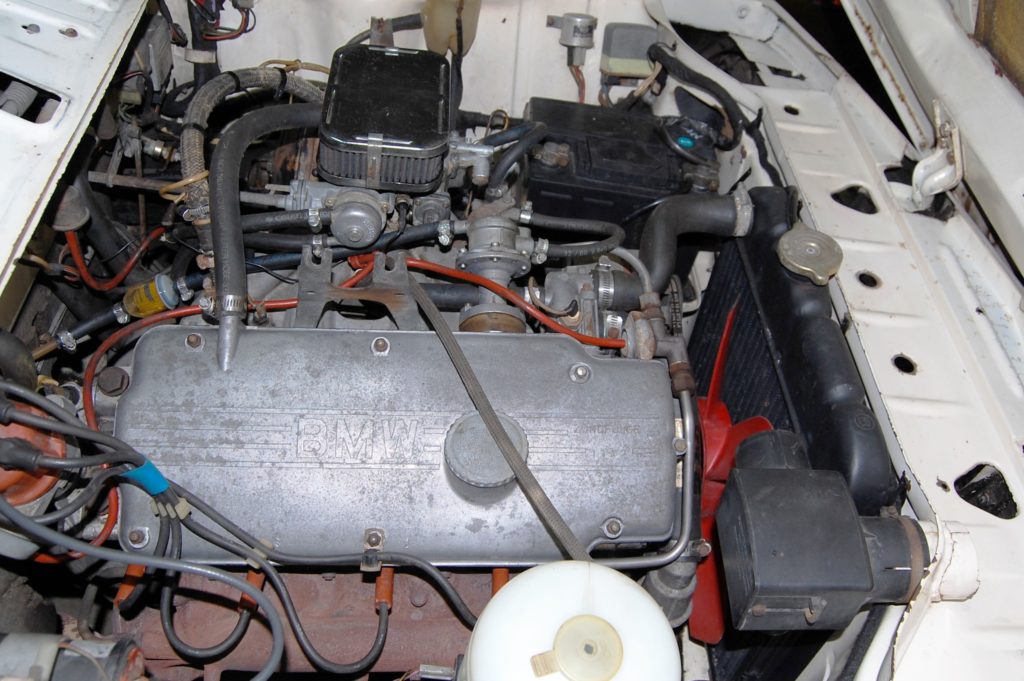
Convenient but cluttered.
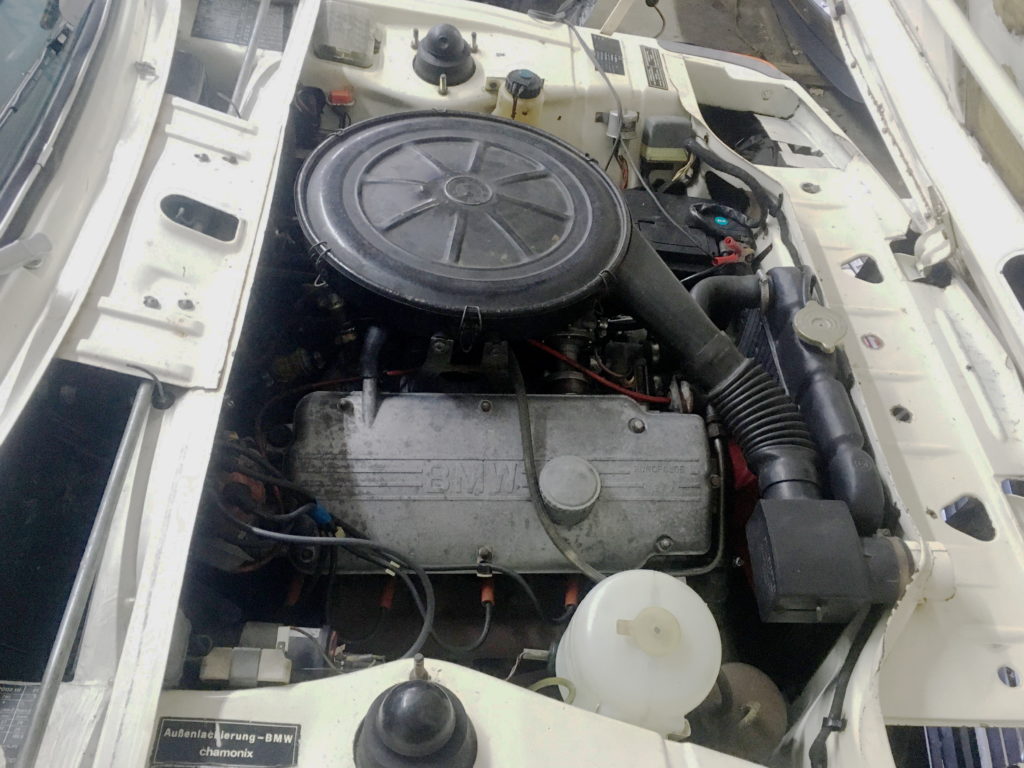
Much more survivor-like.
You can’t talk about original or survivor cars without broaching the subject of hose clamps, which has to be one of the stupidest openings to a sentence in all of written history. But it’s true.
I’ve never been a concours guy, and over the years I’ve been somewhat strident in pushing back against an equal amount of stridency with which folks—many of whom are close friends—police engine-compartment details, such as correct battery cables and zinc-plated washers. Spending a lot of money and effort to correct things that make no difference from a functional standpoint has never been high up on my to-do list.
Non-original hose clamps are one of those things that make purists do the point-and-scream thing that Donald Sutherland did at the end of the remake of Invasion Of The Body Snatchers. I believe that the coolant hoses and carbureted fuel lines on 2002s originally had worm-drive clamps with hex heads, and the high-pressure fuel lines on a tii originally had the slotted-screw-head-bolt-into-threaded-nut-style clamp, but certain people are sent off their meds when instead of either of these, they see generic, inexpensive hardware-store screwdriver-tightened worm-drive clamps in which slots are cut through the clamp (the original worm-drive clamps had raised ridges instead of slots).

A generic hardware store screwdriver-tightened clamp with slots cut into the band (right), and a German-made GEM clamp with a hex head and ridges instead of slots.
The arguments against hardware-store hose clamps are that they’re not original; that over time the the rubber in the hose is extruded through slots in the body of the clamp, which can weaken the hose; that they’re not original; that they have a flat edge instead of a rounded edge, which can cut into the hose; that they’re not original; that when they get old and rust, the screwdriver slot can strip; and did I mention that they’re not original? (Sorry, but it’s this sort of repetition that I hear when people point out non-original hose clamps.)
Now, I am at my core a pragmatist. The original-style clamps with the hex-head screws let you use a flexible nut-driver or even a quarter-inch ratchet with a 6-mm socket to install or remove them. The hex-head driver doesn’t slip, and for that reason alone, these clamps are way better than the generic style.
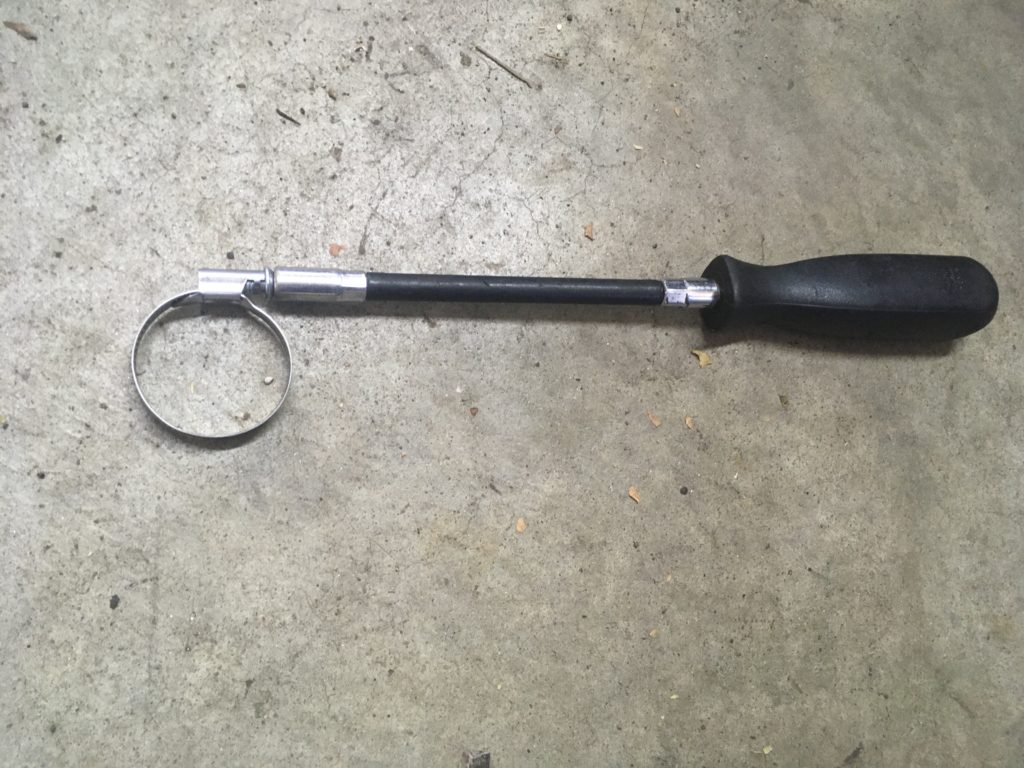
I use a flexible nut-driver on a hex-head clamp.
Plus, even though I decry the tyranny of the the Hose-Clamp Police, my pragmatism extends to understanding and appreciating the importance of these small things when marketing a car as a low-mileage survivor. I don’t like the elitist extrapolation—”Well, if they didn’t care enough to use the correct hose clamps, who knows what other horrors they visited upon the car?!”—but I certainly get that you can’t have glaring errors like incorrect air cleaners and battery cables and hose clamps staring someone in the face if you’re trying to say that this is an intact 48,000-mile survivor car that hasn’t had someone like Rob Siegel booger it up. So I’m more than happy to use the correct style of clamp—and having replaced Hampton’s water pump last year, I was sure that I had used them.
So imagine my surprise when after installing the air-cleaner housing, I looked down and saw generic hose clamps on the thermostat, water-pump, and radiator hoses.
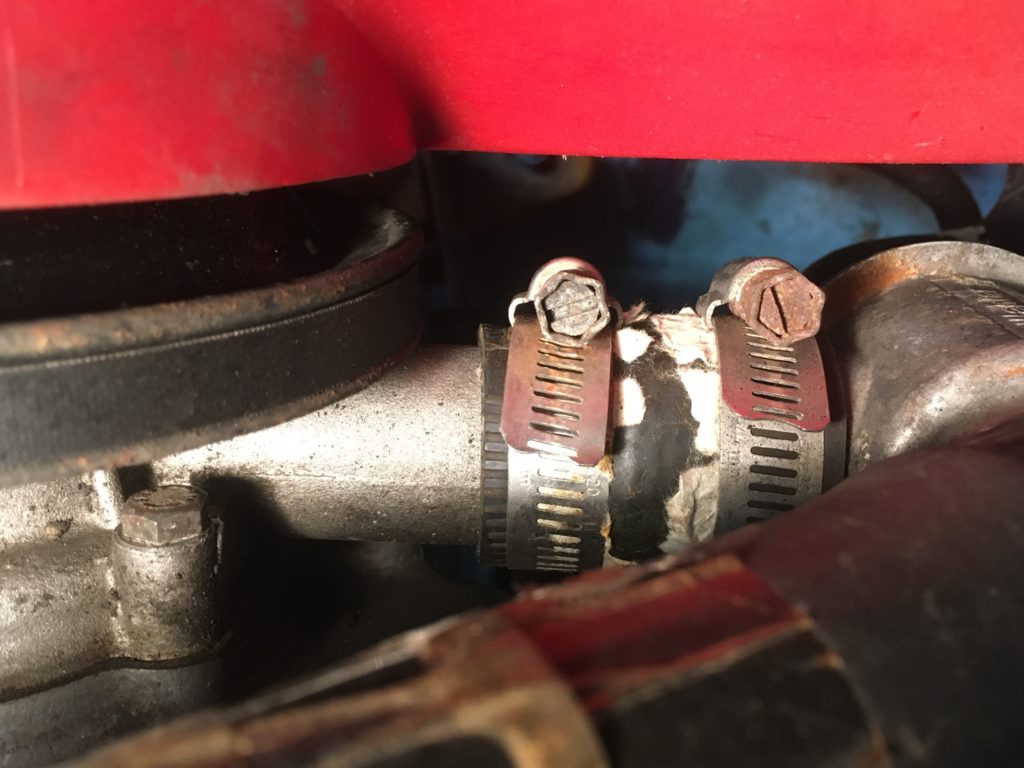
Insert Donald Sutherland noise here.
Then I remembered: Last year when I replaced the water pump (if you read this, you’ll see that I had the existing water pump rebuilt so that it would not only be “correct,” but it would even retain the original ’73 date stamp), I saw the generic hose clamps, thought I had a supply of correct nut-driver clamps in the garage, found that I’d already used them all up, buttoned things up using what was on the car, ordered some new clamps, and then of course promptly forgot all about it for nearly a year.
I hunted around in the garage, and sure enough, I found the bag of eight new German GEM nut-driver clamps that I’d ordered last year (and yes, we can have robust healthy debates about GEM versus Norma versus Genuine BMW clamps with little BMW logos on them).
Although you can install hose clamps without removing the hoses, that’s often more trouble than it’s worth. For an unpressurized fuel line or a coolant hose near the top of the engine, it’s usually much easier to just pull the hose off. But if you undo a thermostat, radiator, or water-pump hose, it’ll gush most of the coolant out, and I didn’t want the trouble or the mess (plus my cats sometimes get into the garage, so I have to be careful about coolant).
Pulling the existing clamp off an in-place hose is trivial; it’s installing the new clamp around the hose in situ that can be surprisingly challenging, since you need to get the little tang on the tip of the band stuffed back under the worm gear. It helps to take a small pair of pliers and bend the end of the tang down slightly. Wrapping the first clamp around the hose and getting the tang under the worm gear took me a while, but once I got the hang of it (the hang of the tang?) the others went in place quickly.
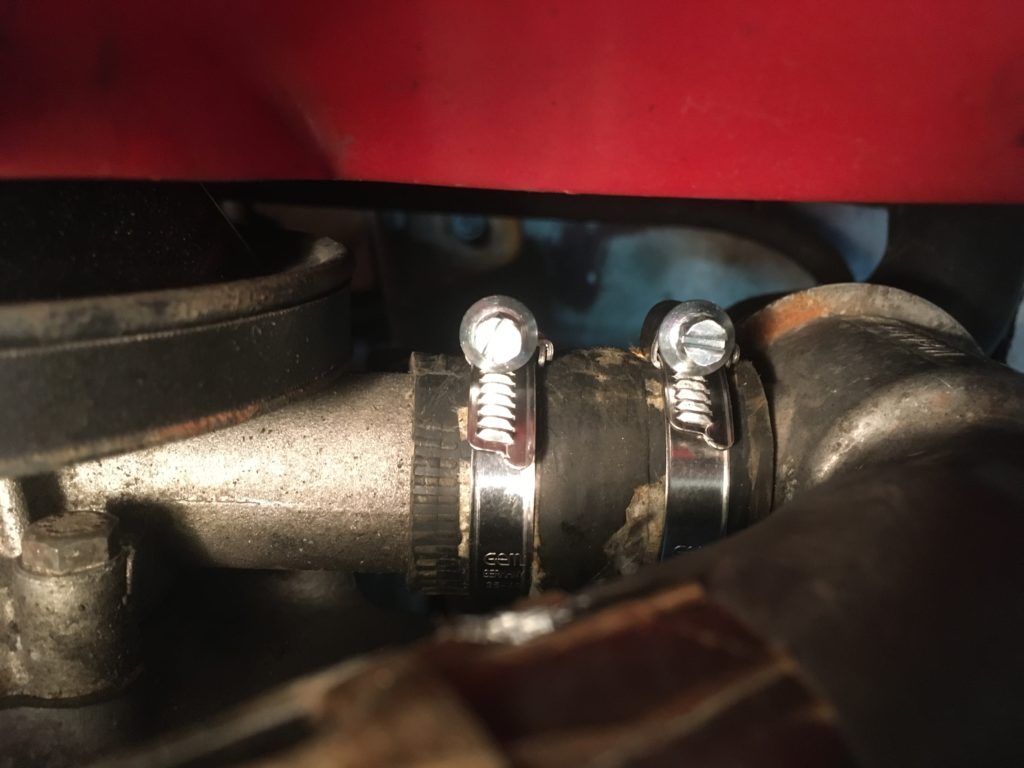
Also much better.
While I was in the neighborhood, I noticed that about half of the little clamps on the fuel lines were the slotted hardware-store variety. Since I was in a hose-clamp-compliance state of mind, I ordered a full set of correct ones for the carburetor, fuel pump, and filter. I’ll get those installed next week.
So: correct air-cleaner housing. Correct hose clamps. Correct battery cables. Rebuilt original water pump. I’m good. No one’s going to screech at Hampton.
Unless they crawl under it and look at the clutch hydraulic line. (I’m kidding. I just found a used original-style clear-plastic one on eBay. See? Not such a hack after all.)—Rob Siegel
Rob’s latest book, The Lotus Chronicles: One man’s sordid tale of passion and madness resurrecting a 40-year-dead Lotus Europa Twin Cam Special, is now available here on Amazon. Signed copies of this and his other books can be ordered directly from Rob here.





















